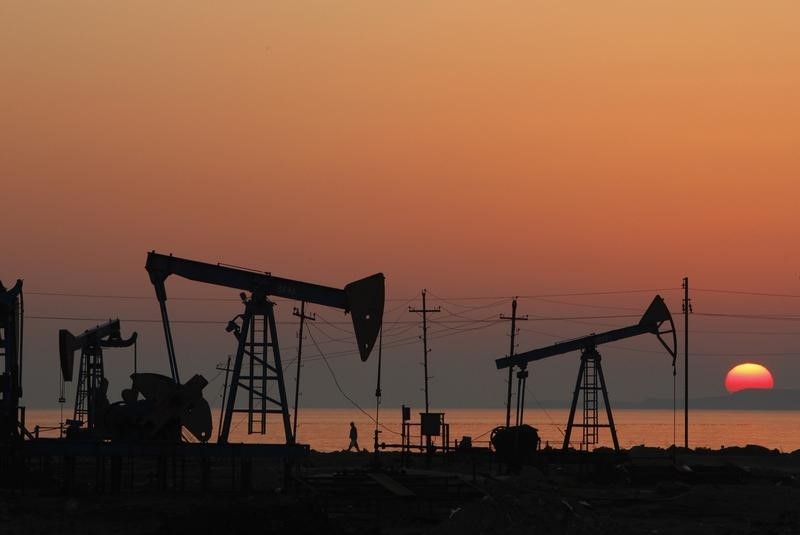Investing.com - Crude oil prices were narrowly mixed in Asia on Tuesday as China demand gained attention on a weaker than expected PMI reading.
On the New York Mercantile Exchange crude futures for December delivery fell 0.18% to $54.05 a barrel, while on London's Intercontinental Exchange, Brent added 0.02% to trade at $60.2 a barrel.
China reported the official manufacturing PMI for October at 51.6, comapred with a level of 52 expected, and its non-manufacturing survey at 54.3, after 55.4 in the previous month. As well, industrial production in Japan fell 1.1% on month provisionally, less than the 1.5% decline seen.
Later on Tuesday, the American Petroleum Institute (API) will report its weekly estimates of crude and refined product stocks. Analysts see a 2.575 million barrels drop in crude, a 2.450 million barrels decline in distillates and a 2.050 million barrels dip in gasoline supplies.
The estimates are followed by official data from the Energy Information Administration (EIA) on Wednesday. The EIA and API figures often diverge.
Crude oil prices settled higher on Monday as concerns over an uptick in Iraqi exports were offset by ongoing speculation that OPEC will agree to extend output cuts beyond March.
Crude oil prices continued their march higher, rising to an eight-month high amid bullish talk from OPEC and non-OPEC members on a possible extension to the output-cut agreement.
OPEC Secretary General Mohammad Barkindo said Russian-Saudi backing for an extension cleared the fog ahead of the group's meeting in Vienna on Nov. 30.
“OPEC welcomes the clear guidance from the crown prince of Saudi Arabia on the need to achieve stable oil markets and sustain it beyond the first quarter of 2018,” Barkindo said weekend.
“Together with the statement expressed by President Putin, this clears the fog on the way to Vienna on Nov.30”, he added.
Barkindo’s comments came just a few days after Saudi Prince Mohammed bin Salman told Reuters on Thursday, the kingdom would support extending output cuts in order to rid the market of excess supplies.
In May, OPEC producers agreed to extend production cuts for a period of nine months until March, but stuck to production cuts of 1.2 million bpd agreed in November last year.
Growing expectations that OPEC will continue to comply with output cuts has forced analysts to lift their forecasts on oil prices amid signs that the OPEC-led deal to cut output is narrowing the gap between demand and supply.
JP Morgan raised its 2018 Brent and WTI forecasts by $11 and $11.40 to $58 and $54.63 per barrel, respectively.
Investor concerns over a potential uptick in global supply, however, capped gains in oil prices after Iraq's southern ports ramp up export capacity by 900,000 barrels per day (bpd) to 4.6 million bpd.
